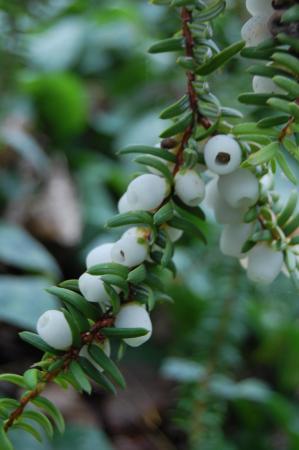Pseudotaxus, as decribed in 1947 by Wan-chun Cheng in Research Notes, Forestry Institute; National Central University, Nanking, China, is commonly known as White-berry or White-cup yew; as well as ç™½è±†æ‰ ( báidòushÄn [ literally "white bean conifer" ]) in the Chinese language. White-berry yew is a mono-specific genus of conifer in the Taxaceae family and as such, is closely related to the other yews in the genus Taxus.
The genus name comes from the Greek and Latin languages meaning "false yew." The difference in mature aril color is the major distinction between this conifer and true yews (Taxus spp.). The sole extant species of Pseudotaxus, P. chienii, was originally described as a species of Taxus (Taxus chienii W.C. Cheng in 1934). 13 years later, it was nearly simultaneously independently split out to a previously unrecognized new genus by both W.C. Cheng and Carl Florin (as Nothotaxus, 1948). Cheng's study was earlier by 3 months. DNA studies confirm both the similarities and differences from other Taxaceae genera. Taxus and Pseudotaxus are considered sister genera, but the closest genetic relative to the White-berry yew is the distinctive New Caledonian yew (Austrotaxus).

Description. Like other yews, white-berry yew is a small coniferous shrub or small tree, reaching mature heights of 6 to 15 feet (2 - 5 m) tall with reddish bark and a broadly domed crown. It is dioecious, with the male and female cones on different trees.
Distribution. This genus is native to southern China - occurring in northern Guangdong, northern Guangxi, Hunan, Southwest Jiangxi and southern Zhejiang provinces. It is grown as an ornamental plant in southern China, but almost never elsewhere. There are also no known selected cultivars.